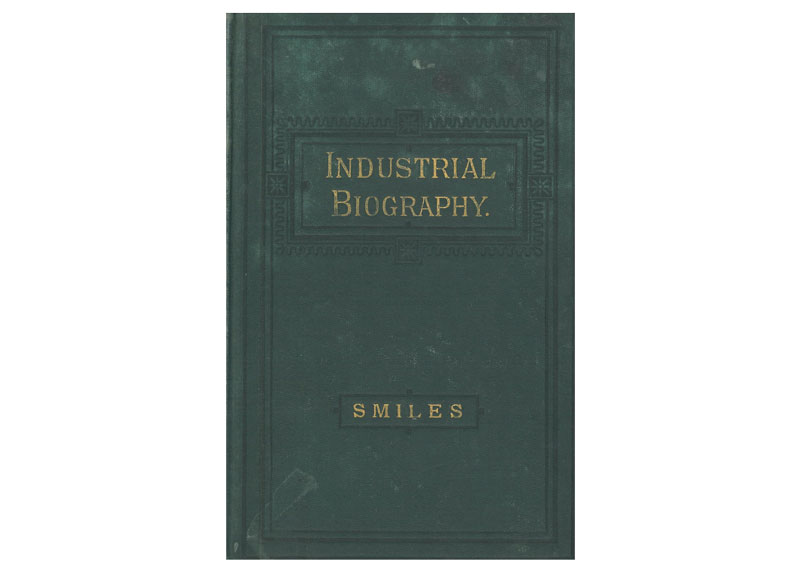Description
Samuel Smiles (1812-1904), could hardly have been better fitted to write the life of George Stephenson and other engineers. From a strict Presbyterian Scottish family, he left school aged 14, and was apprenticed to a doctor (a legitimate way of entering the profession at the time). He then went to Edinburgh University for further study. When Samuel was 20, his father died, leaving his widow with nine children younger than Samuel to support. She would not hear of Samuel leaving University, but worked unceasingly in the small family owned store to support them, and in the home to care for them. Her example helped imbue Smiles with two of the guiding principles which he held were required for success in life – “Thrift” and “Self Help”.
Smiles became involved in politics while still a student, and turned to journalism. If his writings have a fault, it is that he never quite shook off the habit of expecting payment by the line!
Editorship of a Leeds newspaper led to membership of the Leeds Mechanics Institute, where he became friends with James Kitson, the locomotive builder. Kitson encouraged him to deliver his lectures on “Self Help”, Thrift” and other topics, which would later be developed into his books. Involvement in Leeds Civic Affairs took him into railway management, first as secretary of the Leeds and Thirsk Railway, then to a similar post with the South Eastern. Through railway business, Smiles came to know George Stephenson in the old gentleman’s later years, became a close friend of Robert Stephenson, and was acquainted with many of the engineering “Greats” of the 1840s and 1850s so much of his material was gained first hand.
“Industrial Biography” is a later work, dealing with iron workers, mechanical engineers and machine tool makers, amongst others. I9he Darbys, Henry Cort, Joseph Bramah, Henry Maudslay, Joseph Clement, William Fairbairn, James Nasmyth, Blenkinsop and Murray, Richard Roberts and Whitworth.
Of these, the one most closely fitting the “Self Help” model was machine tool maker Joseph Clement, who penniless, and without the tools of his trade (in those days, the better class of workman provided his own tools, and if dismissed, was given a bag to remove them from the employer’ property – hence “getting the sack”). He walked to London and going from door to door, seeking employment, the only offer he got was £1 per week as an unskilled labourer, from the egregious Alexander Galloway, see
After Clement proved himself highly skilled, Galloway declined to pay him more. So Clement made his own tools in his own time, and took himselff of to Joseph Bramah, who soon promoted him to foreman. From there, Clement moved to Maudslays as a draughtsman, and soon made his name with a variety of inventions.
There have been other biographies of the Stephensons, but to my mind Smiles´is still the best, because personal contact. Smiles may bang the “Thrift” and “Self Help” drum a little too hard at times, but by following these precepts, not only Stephenson, but thousands of other young men, born into poverty in the 19thc educated themselves, and made something of their lives, often achieving great success. They were not all in the genius category by any means. I sometimes feel, when I hear modern “Yoof” complaining of lack of opportunity, that they should be locked in a room, with no mobile phone, laptop, PC or tablet, on Stephenson’s diet of oatmeal and water, and not let out until they have read Smiles´ life of the Stephensons.
Oh well, if I were in a good mood, I might let them read it on a tablet… They would probably just stare at the book, wondering how to plug it in…


Reviews
There are no reviews yet.